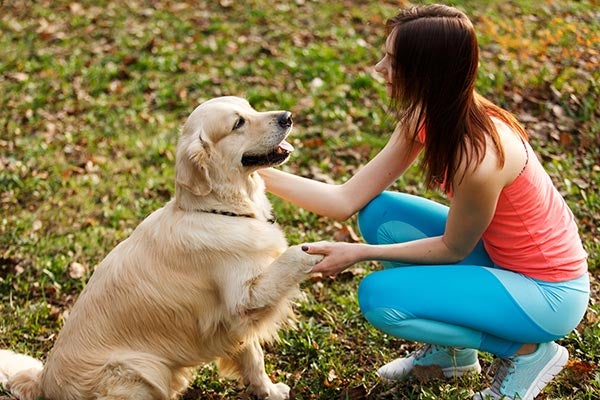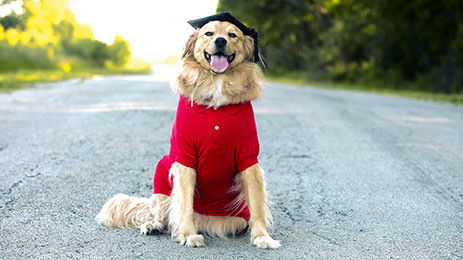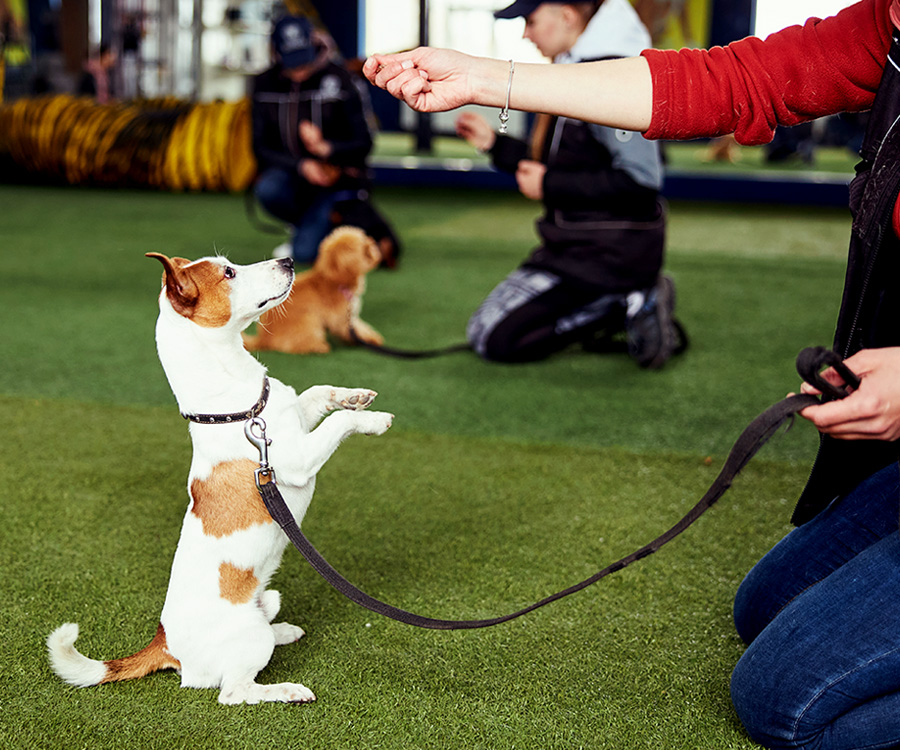Just How to Include Games right into Your Dog Training Routine
Just How to Include Games right into Your Dog Training Routine
Blog Article
Essential Tips for Successful Dog Training: A Guide for Family Pet Owners
Effective dog training is a complex process that requires a strategic technique tailored to both the pet's personality and the owner's objectives. Recognizing exactly how to navigate these challenges can considerably boost the training experience, eventually transforming the partnership between proprietor and pet.
Recognizing Dog Actions
Understanding canine habits is vital for effective training and cultivating a harmonious partnership in between pooches and their owners. dog training. Dogs communicate mostly through body language, vocalizations, and actions, making it vital for owners to interpret these signals accurately.

Socializing plays a significant duty in canine actions; exposure to various atmospheres, individuals, and various other pets can dramatically influence a pet's personality. In addition, aspects such as type features and private temperament need to direct training techniques, as some types might have particular behavioral attributes that require customized techniques. By understanding these aspects, owners can develop an encouraging environment that urges favorable behavior, leading to effective training results and a much deeper bond with their animals.
Developing Consistent Commands
Efficient communication with your pet dog begins with developing consistent commands. This foundational element of training is crucial for cultivating understanding between you and your pet. Consistency in the commands you make use of guarantees that your canine can reliably connect details words or expressions with the desired behaviors.
When picking commands, pick clear, distinct words that are very easy to distinguish and claim from one another. Stay clear of utilizing similar-sounding commands that might confuse your pet dog. Using "sit" and "remain" is ideal, however "rest" and "struck" can lead to misconceptions.
In addition, preserve the same tone and volume for each and every command. Pets are sensitive to singing signs, so varying your tone can create complication.
It is equally vital to ensure that all member of the family get on the same web page pertaining to the commands utilized. A united front in command usage will prevent blended signals and strengthen the learning procedure.
Positive Reinforcement Techniques
The power of favorable support in pet dog training lies in its capability to motivate wanted behaviors via rewards and appreciation. This technique is grounded in the concept that behaviors complied with by favorable results are most likely to be duplicated. By incorporating favorable support right into your training program, you can effectively shape your canine's actions in a positive fashion.
To carry out favorable support, it's important to identify what encourages your canine, whether it be treats, toys, or verbal praise. When your pet executes a wanted action, such as remaining on command, immediately award them with a reward or love. This organization in between the command and the favorable outcome reinforces their understanding.
It's vital to timing the incentives properly; delivering the reinforcement within seconds of the desired actions aids your canine make the connection (dog training). In addition, consistency is key-- make sure that all household participants use the exact same commands and incentive systems to avoid confusion

Gradually, you can reduce the frequency of treats as your pet dog learns the habits, transitioning to applaud or recurring benefits. This method not only fosters a strong bond in between you and your dog yet likewise advertises a positive discovering setting, making educating a delightful experience for both.
Socialization and Communication
Constantly subjecting your pet dog to a selection of settings, individuals, and various other animals is crucial for their social advancement. Socialization should start early, preferably throughout the critical home window of 3 to 14 weeks, when young puppies are most responsive to brand-new experiences. Older pets can additionally benefit from recurring socializing initiatives.
Introduce your canine to various settings, such as parks, pet-friendly shops, and city areas. This exposure assists them adjust to click for info different stimulations, lowering anxiety and anxiety feedbacks. Urge favorable interactions with other pet dogs and people, ensuring that these experiences are controlled and risk-free to foster self-confidence.
Use structured playdates with courteous canines, as this can improve your pet dog's social abilities and instruct them proper habits. Obedience classes and training sessions also give excellent opportunities for socialization, allowing your canine to communicate with others in a supervised atmosphere.
Monitor your dog's body movement during communications, as this will aid you gauge their convenience level. Progressively boost exposure to even more difficult circumstances while making certain that each experience declares. A well-socialized pet is more probable to exhibit balanced behavior, making them a happiness to have in any type of setup.
Resolving Common Training Challenges
Every pet dog owner will certainly run into training hop over to here obstacles at some time, no matter their dog's age or socialization degree. Determining common problems such as stubbornness, distractions, and terror can help in creating effective approaches for improvement.

Diversions throughout training sessions can thwart focus. To battle this, begin training in a quiet environment with marginal stimulations. Slowly present diversions as the dog becomes extra efficient in commands. Short, frequent training sessions are additionally efficient in maintaining focus.
Fearfulness can impede a pet's learning procedure. Gradual desensitization to the source go to these guys of anxiety, paired with favorable reinforcement, can aid minimize stress and anxiety. Perseverance is important; never force a pet dog into a circumstance that causes distress, as this might worsen the issue.
Eventually, understanding and resolving these common challenges with a structured method will certainly foster a much more efficient training experience, strengthening the bond in between pet and proprietor while promoting reliable learning.
Verdict
In summary, successful pet training relies on a detailed understanding of canine behavior, the facility of consistent commands, and the application of positive reinforcement strategies. Socialization plays an essential role in creating well-adjusted family pets, while resolving common training challenges calls for persistence and versatility. By carrying out these important techniques, pet dog proprietors can cultivate a solid bond with their canines and promote desirable habits, inevitably resulting in a harmonious relationship between people and their canine companions.
Recognizing pet behavior is essential for efficient training and fostering a harmonious relationship between dogs and their proprietors.Socializing plays a significant duty in pet dog habits; direct exposure to numerous atmospheres, people, and other animals can considerably impact a dog's temperament.The power of favorable reinforcement in pet training lies in its capability to encourage desired actions via benefits and appreciation. By incorporating favorable support into your training regimen, you can effectively shape your dog's actions in a positive way.
In recap, successful dog training counts on a thorough understanding of canine behavior, the facility of constant commands, and the application of favorable reinforcement strategies.
Report this page